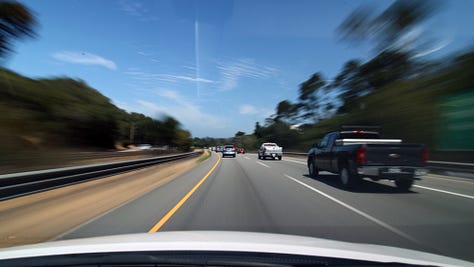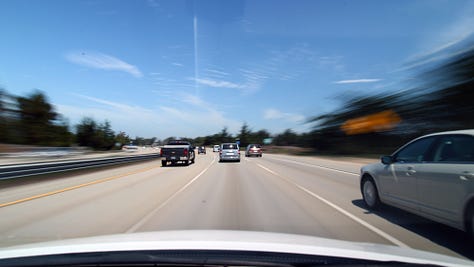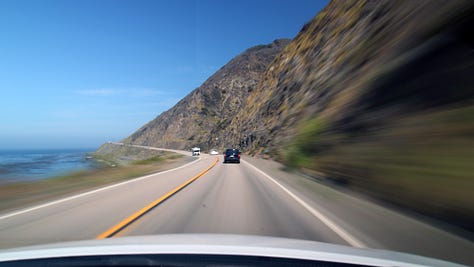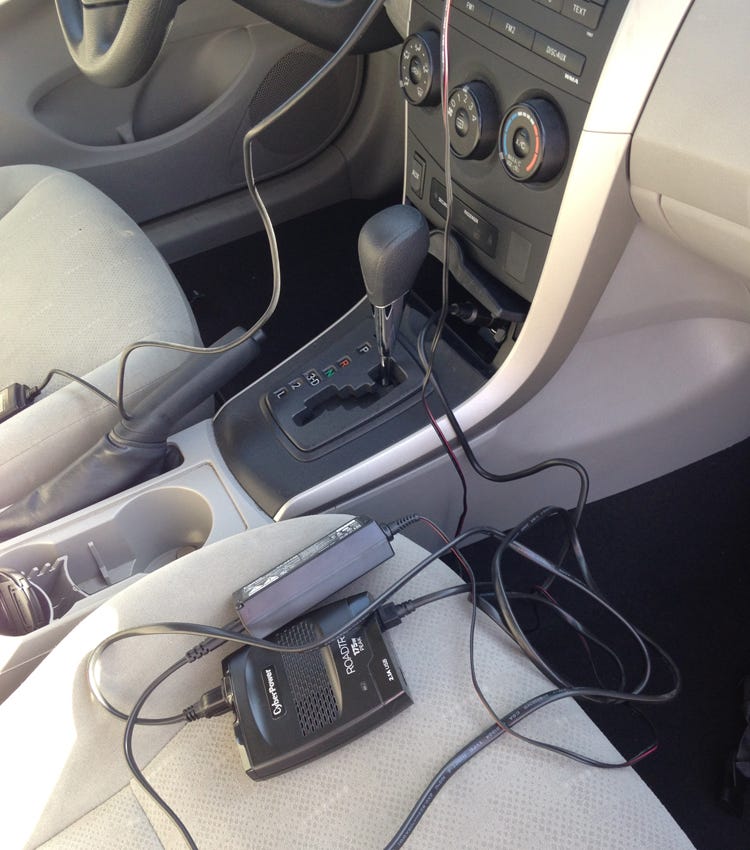Timelapsing the California Coast
I had my first chance recently to try out one of my newest hobbies as of late: Timelapse Photography.
I chose California’s Highway 1 for this because it is famous for its beautiful oceanside bluffs and winding turns, which go for hundreds of miles along the shoreline. My idea was to rent a car for the weekend and spend two days filming the highway with my camera mounted on the windshield, starting and ending at the LA and San Fran airports.
It would take two days. Normally I wouldn’t mind camping or sleeping in my car, but I needed somewhere to set up my computer at the end of the first day to load up and review the raw footage. Clearly, none of the hotels on that highway were hurting for customers. I spent a whole evening trying to find an affordable reservation, but almost every mediocre hotel in the area was at least $200. And some of them even wanted a two night minimum, fuck you. I finally settled with a Motel 6 in Morro Bay, about halfway up the drive.
None of the footage from the first day turned out well, but by the next morning I made it work after some trial and error. I set my camera to manual mode, and shut off the auto focus and image preview, eliminating extra processing and allowing the camera more time to save each shot. It was done with the following equipment and settings:
Gear
Canon EOS Rebel SL1
Canon EF-S 10-18mm f/4.5-5.6 Wide Angle Lens
Platinum 67mm ND Filter
Aputure Timer Remote Control
PanaVise Suction Cup Mount
CyberPower RoadTrip 175 Power Inverter
Canon ACK-E8 AC Adapter
Transcend 128GB SDXC Memory Card
Settings
14mm focal length
f/25, 1/4sec, ISO100
1 shot per second
Playback at 30fps
Neutral Density Filter
One of my biggest complaints about most of the drivelapse videos I’ve seen is that they’re done with fast shutter speeds, causing the picture to look jerky and unnatural. In this video, I needed to create motion blur by slowing the shutter to 1/4sec, rendering a smoother, more natural looking picture.
The problem was that I also needed a low ISO and wide aperture to focus on the landscape view properly, but couldn’t slow down the shutter without overexposing. This was solved using a Neutral Density Filter, which I first heard about from this guy. It blocks light going into the lens without losing any color or picture quality, so you can film at slower shutter speeds and bring more fluid motion to the picture.
Window Mount
There are a lot of DSLR mounts you can use for something like this. I went with this one from PanaVise because it’s small and portable. There was a slight rattle to it, which I had to correct in post-production later. It helped to apply tie down straps, as you see in the picture. That aside, it was sturdy and held in position for the duration of the ride. Depending on the angle of the windshield and size of your camera, you may also need to buy a mount extension with this model.
Aputure Intervalometer
With this device, you can set your camera’s shutter to activate at pretty much any time interval you want. Your camera can shoot on custom time intervals, or on command by hitting the remote shutter button. It is also useful for lowlight photography, when you don’t want to activate your camera directly and risk blurring the picture.
Power Supply
On its own, your camera might get an hour of battery life if you’re lucky. But for something like this, I needed a steady power source that could allow me to drive and shoot for hours. With the power inverter and AC adapter setup, this became one less thing to worry about.
Post-Production
Later, I loaded the footage as an image sequence into Adobe Premiere. I used Adobe After Effects for the level correction and image stabilization. A lot of image stabilizing tools have a way of warping the picture and making it even worse, but fortunately the one in After Effects lets you tweak the settings until you find good middle ground. In my case, I only needed to get a slight vibration out of the picture.
Once everything was ready, I just hit the start button on the intervalometer and started driving. I went for hours around the hairpin turns of the highway to the hypnotic clicking of my camera’s shutter.






The only consideration I have with this setup is that shooting at 1 shot per second was a bit spread out for some of the winding parts of the road. In playback, a lot of it was way too dizzying at 30fps, and so I had to use the straightest parts of the road for the video. Next time I want to try shooting at twice the frame rate, and slightly bring up the motion blur. That, and put a black blanket on the dashboard and use a lens hood to block out the glare.
With a similar setup, you should be able to get good footage to use in your videos. Have fun shooting, traveler.








